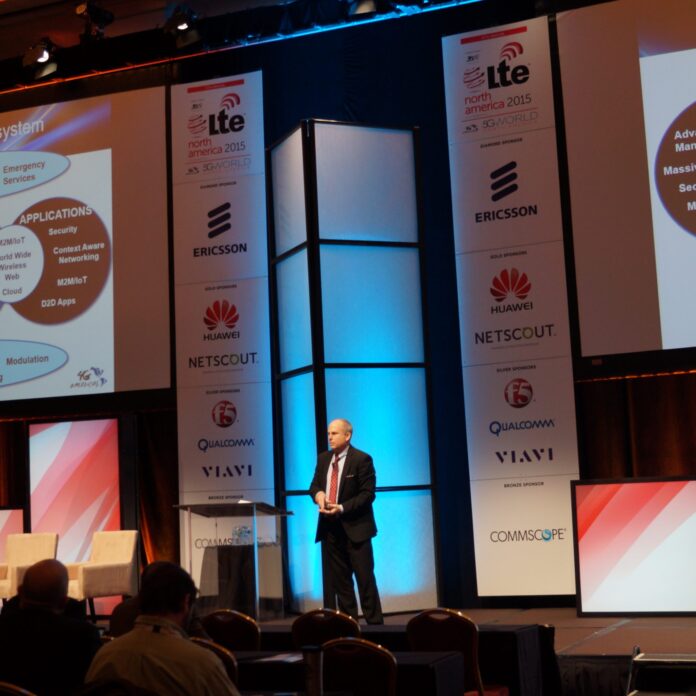LTE continues to evolve and present new challenges and opportunities, even as the industry begins to chase “5G” dreams. At last week’s LTE North America event, both the current state of LTE features as well as new evolutions within mobile networks and the trends driving the industry came into sharper focus.
Here are six key takeaways from the show. More session coverage and interviews are available on RCR Wireless News’ YouTube channel.
1. LTE has a long life ahead of it and is expected to provide both significant improvements to current implementations as well as a solid underpinning for 5G. Chris Pearson, president of 4G Americas, noted as of Release 13 (to be finalized in the spring of 2016), features will be known as LTE-Advanced Pro rather than just LTE-Advanced. LTE is expected to be the workhorse of advanced wireless networks for the foreseeable future, predicted to carry the bulk of traffic even when 5G becomes available around 2020. There is also still significant room for growth in LTE – even by 2020, LTE coverage is expected to reach only 70% of the world’s population.
2. 5G is generating industry interest, early exploration and research, but the business case for 5G is still unclear – and operators feel many of the use cases that are being presented can be met by the continuing evolution of LTE. In particular, the “Internet of Things” is seen as a major driver of network investments, ranging from low-power wide area networks (read more here from the GSMA) to LTE as well as future 5G networks. Representatives from AT&T and T-Mobile US discussed some of the issues related to 5G in the following panel session:
[embedyt] http://www.youtube.com/watch?v=lindGJincdY[/embedyt]
3. Voice over LTE continues to present challenges, but also has seen quite a bit of progress in the past year. Operators will continue to roll out VoLTE in the coming year and are also exploring the role that voice over Wi-Fi will play in their networks. Dirk Bernhardt, CEO of P3 Communications, spoke with RCR Wireless News about VoLTE progress and trends:
[embedyt] http://www.youtube.com/watch?v=TCZeCrwShAE[/embedyt]
4. Virtualization is continuing, as a strategy for operators to future-proof their networks so that even if the radio interface changes, services will remain in the same IP domain and also as part of small cell strategies. Virtualization is making the use of testing, monitoring, analytics and automation in networks even more important in order to maintain quality of service and experience when network elements are separated from purpose-built hardware. Hear from NetScout’s Samir Marwaha on what the company sees in virtualization and other trends:
[embedyt] http://www.youtube.com/watch?v=d_LqyKq1Nyg[/embedyt]
5. Signaling and antennas – though often overlooked – have significant impacts on network performance and can’t be neglected. Antennas capabilities continue to advance, and present important infrastructure questions for carriers: for example, whether densifying the network through sectorization or moving to higher-order multiple-input/multiple-output is the better investment to achieve goals in throughput and coverage (as presented by CommScope in one session). LTE North America devoted an entire day to signaling and antennas, with some of the highlights captured in interviews with Keith Radousky, CTO of Quintel; and a session on signaling impacts of emerging technologies by Alberto Diez of Mobile Technology and Strategy, which included “extreme” use case examples.
[embedyt] http://www.youtube.com/watch?v=hHQAsewNq9w[/embedyt]
[embedyt] http://www.youtube.com/watch?v=3UfQ8i58DNw[/embedyt]
6. On the public safety track, it was clear 2016 could prove to be a pivotal year for the First Responders Network Authority and its nationwide FirstNet network for public safety users. A finalized Request for Proposal is expected from FirstNet by the end of this year and new standards are coming to fruition, including mission-critical push-to-talk services. Although the reaction to FirstNet among first responders has been somewhat mixed, with some wary about how much using the system will cost, early builders and pilot projects are getting some very positive reactions from end users.

